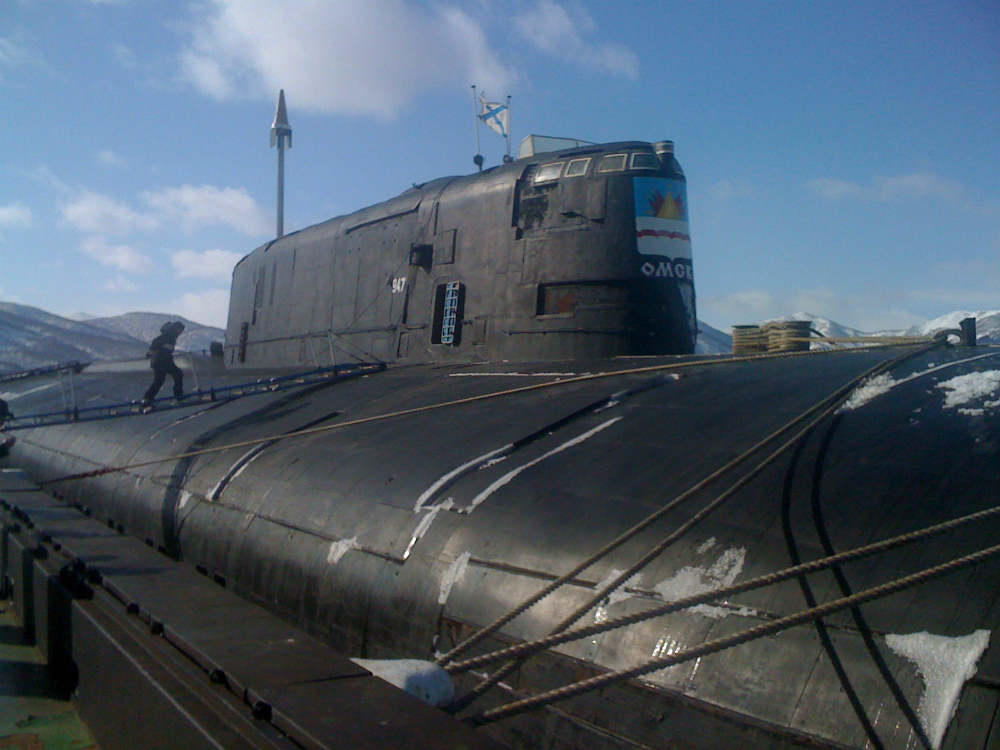
Advertisement
(NationalSecurity.news) The Russian navy’s undersea warfare capabilities are rapidly expanding after years of debilitating stagnation following the end of the Cold War, and now threatens to overtake all of NATO’s European-based multinational submarine force, a new report warns.
The Center for Strategic and International Studies notes in its report that the undersea balance of power is shifting towards Moscow, as Russia puts more resources into its sub fleet while NATO countries have cut back on all military expenditures.
“Russia is expanding its use of undersea warfare in a broader strategy of coercion aimed at its neighbors, NATO, and the United States. Suspected territorial incursions in the Baltic Sea and provocative patrols in the North Atlantic have not only caused alarm among NATO and partner nations, but have underscored the extent to which U.S. and European antisubmarine warfare capabilities have atrophied since the end of the Cold War,” says a summary.
The report’s authors note that it “analyzes Russian intentions and capabilities in the near to mid-term and the ability of NATO and partner nations to respond effectively to Russian activities in the undersea domain.”
To be sure, Russia today is a shadow of itself during the heady days of the Soviet Union. The Russian economy has contracted dramatically as global oil prices have fallen, oil being one of Moscow’s chief exports. Also, Western sanctions imposed after Russian forces took over the Crimea and are suspected of aiding rebels in eastern Ukraine have hampered economic output.

As Breaking Defense reports, Russian shipyards remain “a rusting mess,” and the Russian submarine fleet is roughly one-fifth its Soviet size.
That said, Russia is building a cadre of professional sailors deployed on ultra-modern subs that are comparable to USS Virginia class submarines in terms of stealth, sonar and armament.
What’s more, the Kremlin is making good use of its budding modern sub force. It is now more active than at any time since the end of the Cold War in 1991, and while patrols still remain below those levels, Russian subs are nevertheless believed to have made politically important incursions into Finnish and Swedish waters, as well as approaches to Britain’s sub base in Faslane, Scotland.
“Russia operates a small number of very small, nuclear powered submarines that are capable of diving in excess of several thousand meters,” said Andrew Metrick, a co-author of the report, Britain’s The Sun noted. “You can imagine what a clandestine deployable deep submergence vehicle could be used for.”
He continued: “It’s pretty scary to think about some of the types of missions. It’s probably the most shadowy part of the Russian undersea apparatus. It’s not operated by their navy, it’s operated by a separate branch of their Ministry of Defense.”
The CSIS report also documented the deteriorating state of NATO navies’ sub forces, including the once-formidable British submarine fleet.
“The organizations, relationships, intelligence, and capabilities that once supported a robust ASW (Anti-Submarine Warfare) network in the North Atlantic and Baltic Sea no longer exist,” the CSIS study said flatly.
“We’re in a bad place as an alliance with regard to Russia’s underwater resurgence,” Jerry Hendrix, a retired Navy captain with Center for New American Security, told Breaking Defense.
The British navy has been especially hard hit, retiring its only aircraft carrier in 2014 and getting out of the maritime patrol business.
Some good news for British seafaring capabilities: London continued developing and building the HMS Queen Elizabeth-class of new carriers, and has agreed to buy P-8 Poseidon maritime patrol aircraft from Boeing, which resembles a 737. Also, Britain is building the acclaimed Astute-class nuclear submarine and is developing a new Type 26 destroyer, both of which will come equipped with major anti-submarine warfare capabilities.
One other hang up, however – the U.S. Navy’s sub fleet is shrinking as well. Los Angeles-class attack submarines built in the 1980s are being retired faster than Virginia-class boats can be built to replace them. And in Europe, the U.S. can only maintain a few subs on station, compared with about 10 or so new or newer Russian subs in its Northern Fleet.
More:
- Cold War II: Russia Deploying Subs To Historic Chokepoint As U.S. Upgrading European Bases
- Report: NATO Alliance ‘At Risk’ As Europe Slides And Russia Threatens
- Russia Engaging In Cold War-Style ‘Battle Of The Atlantic,’ Says Top U.S. Navy Admiral
NationalSecurity.news is part of USA Features Media.
Submit a correction >>
This article may contain statements that reflect the opinion of the author
Advertisement
Advertisements
















